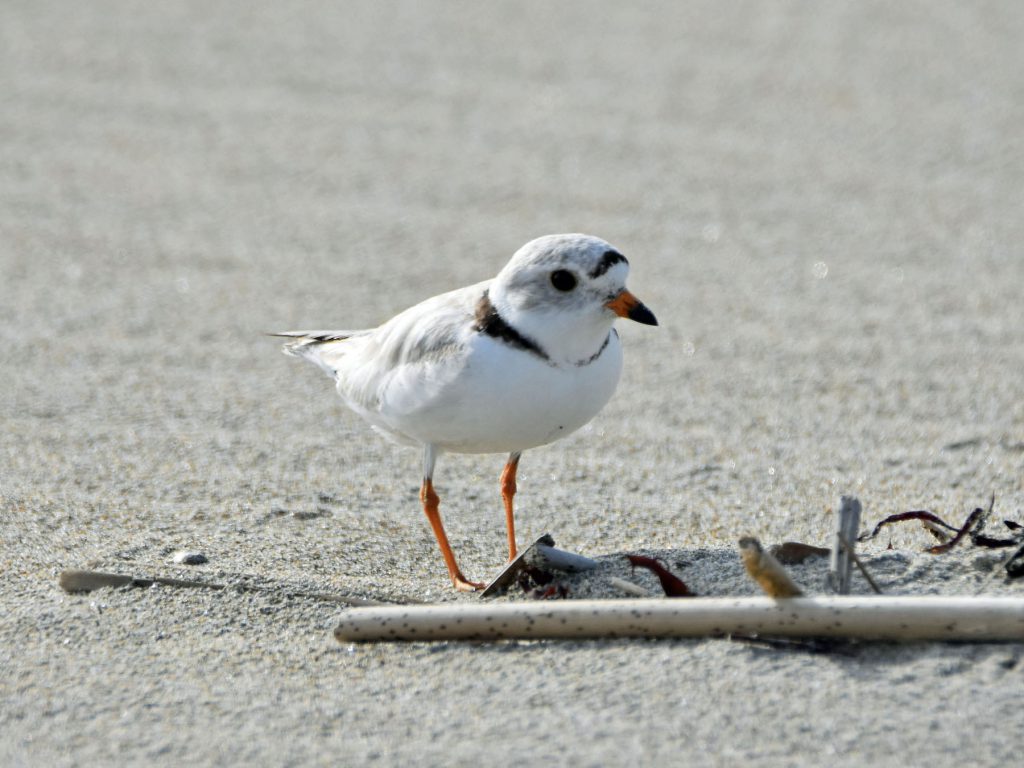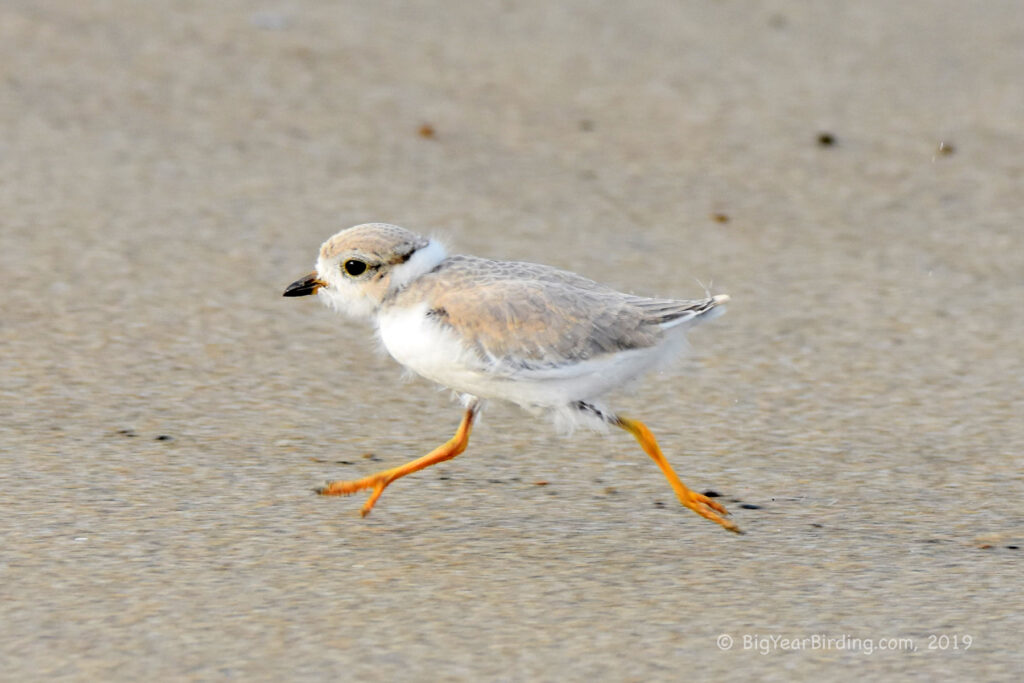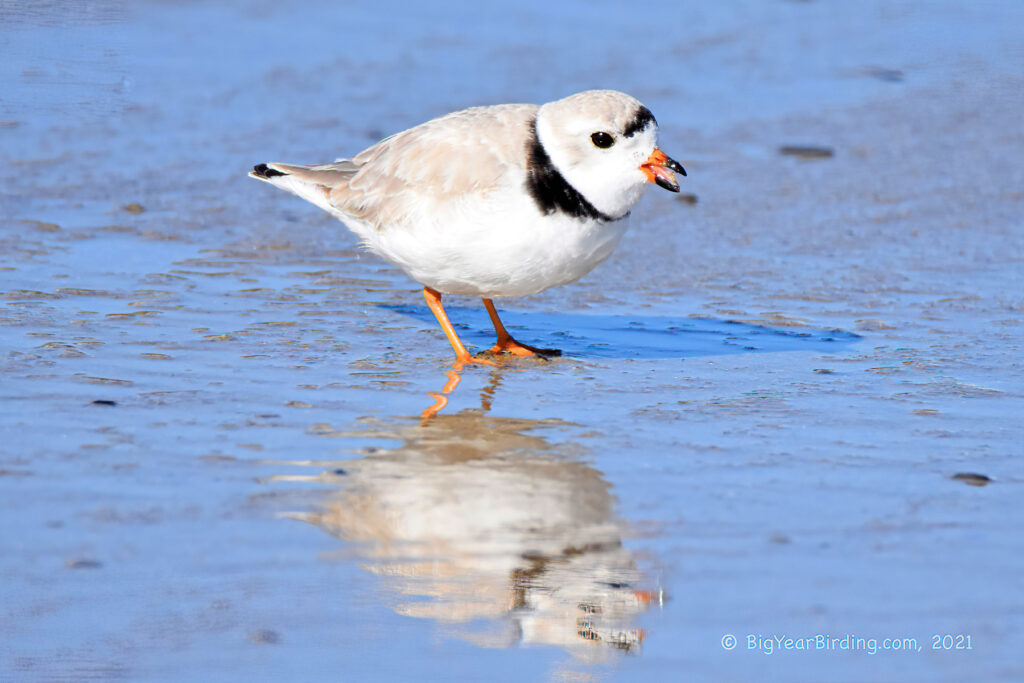
The piping plover is a small, sandy-colored bird that breeds in the Great Lakes region, along the Atlantic coast, and in the Great Plains. This small bird measures only 6-7 inches in length and weighs approximately 1.5 ounces, making it one of the smallest shorebirds in North America.
One of the most distinguishing field marks of the piping plover is its unique sand-colored plumage. This small bird has a white forehead, black mask around its eyes, and a short, stout bill. The bird’s legs are bright orange, and it has a black band around its neck. During breeding season, the piping plover also has a distinctive black ring around its neck.
Piping plovers are migratory birds, and during the breeding season, they can be found nesting on sandy beaches or dunes near freshwater or saltwater shorelines. The bird’s breeding season starts in late April and lasts through August. During the winter months, piping plovers migrate to the Gulf of Mexico and the southeastern coast of the United States.
One of the biggest threats to the piping plover is habitat loss due to development, shoreline erosion, and recreational activities. Because of this, the piping plover is listed as a threatened species under the Endangered Species Act. Conservation efforts have been put in place to protect the bird’s habitat and nesting sites.

Despite its small size, the piping plover plays an essential role in maintaining the balance of the coastal ecosystem. This bird feeds on small invertebrates found in the sand and helps to control their populations. It is also an indicator of the health of the coastal ecosystem, and its presence or absence can signal changes in the environment.

